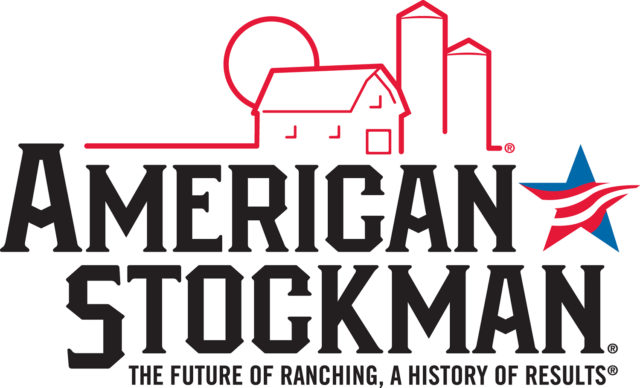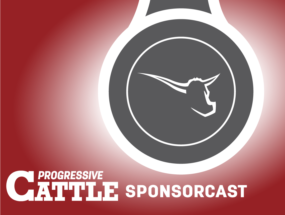Herd health and biosecurity efforts have never been more important than they are today. As we prepare to build back the U.S. beef herd and reduce diseases threatening U.S. beef production, farmers and ranchers should consider how to protect their animals and operations before it is too late. Here are a few topics shared at Cattlemen’s College during the National Cattlemen’s Beef Association (NCBA) CattleCon 2025 in San Antonio, Texas.
Understanding BRD
Bovine respiratory disease is very common in cow-calf operations and feedlots. Its frequency leads to a high economic impact on producers and the U.S. beef supply. It is becoming more prevalent and is increasing mortality in these operations.
“There's an estimate from 2018 that says it [BRD] costs the industry 165 million dollars a year,” said Calvin Booker, Telus Agriculture & Consumer Goods, during a Cattlemen’s College presentation titled “Understanding Bovine Respiratory Disease (BRD) in Modern Beef Production Systems.” “I think if I looked at feeder cattle prices today, you would multiply that number by two or three times to get a better estimate of it.”
BRD is most common in cattle first entering the feedlot system who are stressed, have low immunity and are comingling for the first time, as well as calves aged 3 to 5 months, likely due to the decline of maternal antibodies and narrowed calving intervals, Booker said. It can be challenging to manage because of the complexity of the disease, environmental and management factors, and antimicrobial resistance. However, while treatment rates have increased, the percentage of treated animals that die from BRD has not changed significantly.
Mass medication with antibiotics on arrival at the feedlot can be effective in controlling BRD in high-risk populations. Additionally, the use of vaccinations as a preventive measure will help with BRD and the severity of infection. There is a higher risk of BRD in bull calves and those born to 2-year-old dams, Booker said. Better nutrition for all cows during gestation and maintaining gut health and overall immune system strength in animals is important in reducing BRD.
Research continues into the prevention, treatment and impact of BRD. New technologies for detecting sick animals may be on the horizon, such as ones that measure steps, standing time and spatial behavior of cattle, which catches sick cattle for treatment earlier than before, Booker said. There is also the potential of genetic selection for BRD resilience. Producers should use vaccines, improve communication between buyers and sellers of cattle, and continue being educated on potential solutions for BRD control.
Cracking the code on AIP
Along with BRD, acute interstitial pneumonia (AIP) is another common respiratory disease dealt with in feedlot cattle. AIP is becoming a bigger issue each year with death loss, due to the disease increasing.
Since the 1960s, “AIP is primarily used to describe a sporadic respiratory disease in fed cattle in North America and is associated with relatively high cases of fatality rates, and, for that reason, is associated with high economic losses,” said Josh Szasz, 5 Rivers Cattle Feeding LLC, during a Cattlemen’s College presentation titled “Cracking the Code on Acute Interstitial Pneumonia (AIP) in Cattle.”
He adds that AIP primarily affects heifers, has high fatality rates, and is associated with days on feed – particularly 90 to 100 days or more – and seasonality, with a higher incidence in summer months and a lower incidence in Holstein or Mexican-origin cattle. It is hard to distinguish from other types of pneumonia until a necropsy is done.
Paige Schmidt, Overton Veterinary Sciences, compared data showing a higher probability of AIP mortality in heifer lots and those arriving between January and May, during the same presentation.
Economic losses per lot are estimated at $7 for steers and $12 for heifers, Schmidt said. Despite ongoing research, the etiology remains unclear. Treatment and prevention are challenging due to the sudden onset of the disease and the lack of a known cause.
Ongoing research and data analysis are providing valuable insights, but due to the complexity of AIP, there is a need for continued research to understand and address the disease.
“So we're not cracking the code today, but we think we're on our way to crack the code,” Schmidt said. “AIP could be a multifactorial. It's a sporadic disease. It's hard to really hone in on, but we're headed in the right direction.”
The first line of defense
With all the diseases cattle are susceptible to, biosecurity is the first prevention step producers should take. Daily biosecurity measures allow producers to easily enhance biosecurity for highly contagious diseases such as foot-and-mouth disease (FMD) if an outbreak were to happen.
Danelle Bickett-Weddle, Preventalytics, shared practical examples, such as creating a line of separation between your operation and the outside, developing cleaning stations and implanting sanitation guidelines during her presentation titled “The First Line of Defense.”
Biosecurity helps block cattle’s exposure to bacteria, viruses and parasites. It’s like paying your insurance premium to prevent disease outbreaks, Bickett-Weddle said.
Simple biosecurity measures, such as changing your clothes after handling a sick calf, may seem silly when you are understaffed and in a time crunch. However, daily biosecurity practices may lead you to prevent diseases such as BVD and FMD from spreading through your operation. If an outbreak of a highly contagious disease happens, you’ll have a plan in place and measures ready to be enhanced to stop the spread before it gets to your operation.
It is important to have a designated person responsible for biosecurity on your operation. This person is responsible for knowing what the enhanced plan is if an emergency occurs. The first step in creating a biosecurity plan is to identify movement risks of deliveries, personnel and other inputs to the operation and develop a line of separation.
Implementing biosecurity on public lands is also extremely important to protect your cattle. You will need to collaborate with agencies such as the Forest Service and BLM in developing those plans.
Once you have a biosecurity plan in place, it is important to continually update and adapt it to changing circumstances and risks surrounding your operation. More resources and information are available at the Secure Beef Supply Plan website.












